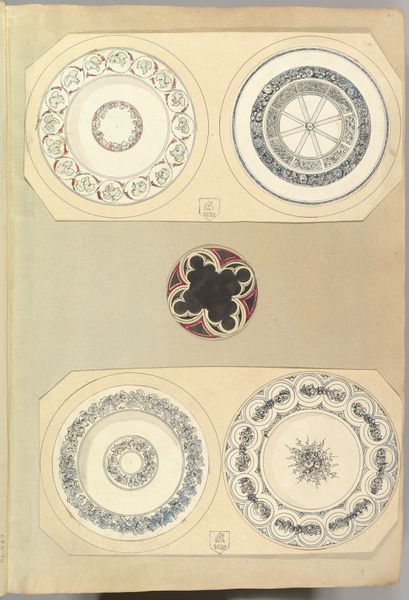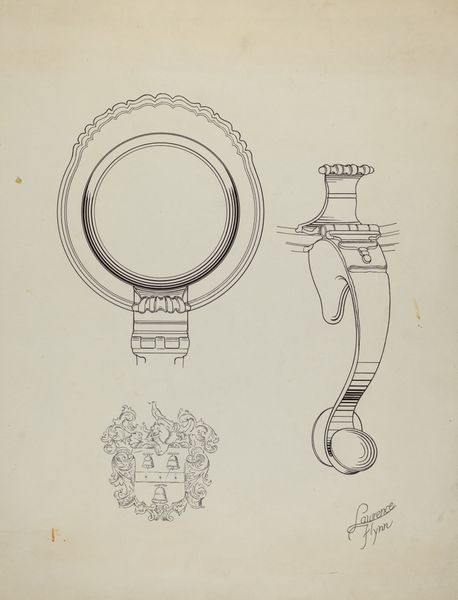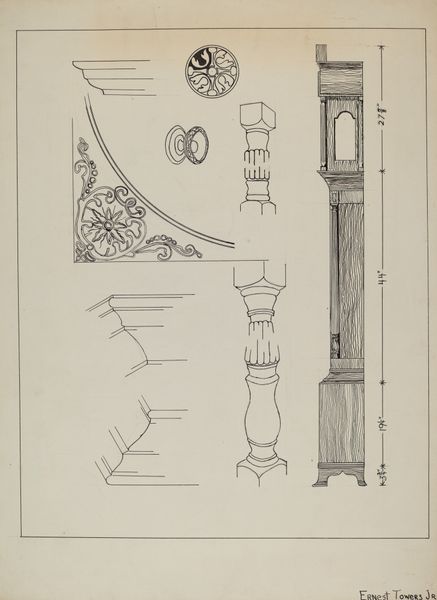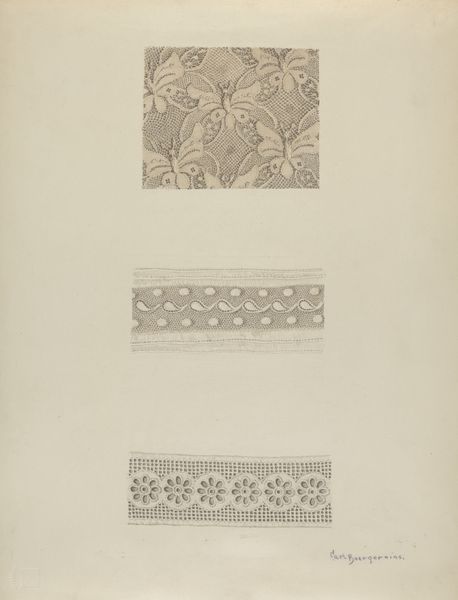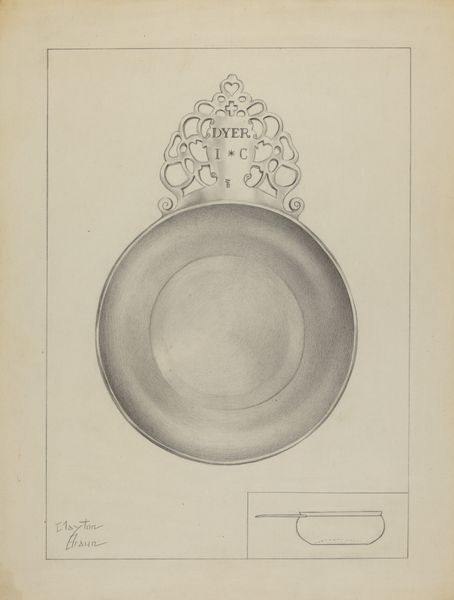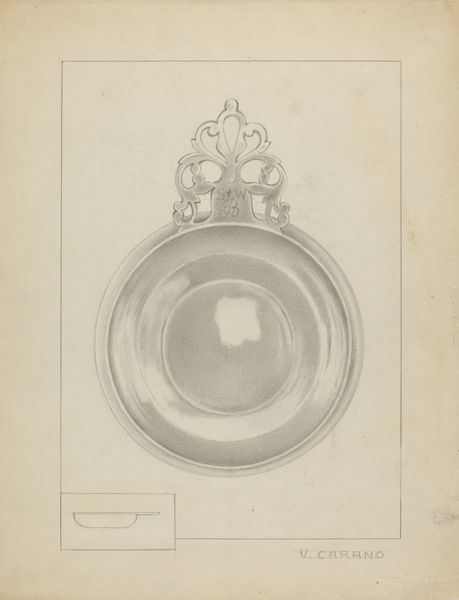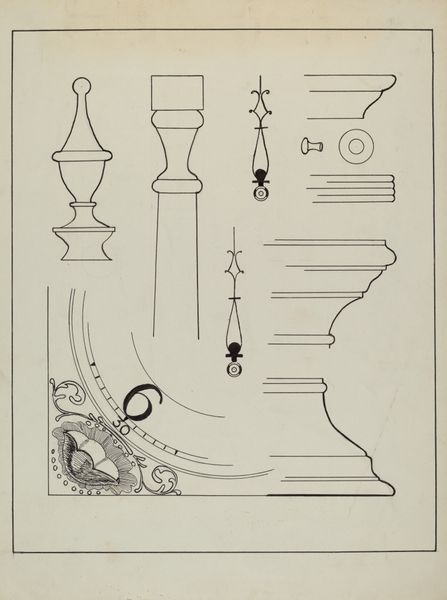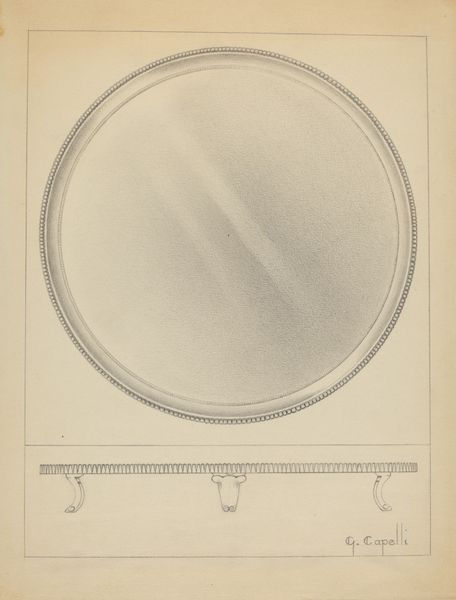
drawing, paper, ink
#
drawing
#
paper
#
ink
#
geometric
#
line
#
decorative-art
Dimensions: overall: 35.4 x 25.1 cm (13 15/16 x 9 7/8 in.)
Copyright: National Gallery of Art: CC0 1.0
Curator: This is Lawrence Flynn’s drawing, “Silver Tankard: Detail,” created around 1936, executed in ink on paper. What strikes you initially about it? Editor: There’s a meticulousness that I find quite captivating. It's almost architectural in its precision, yet there's a whimsy woven through the details, particularly the heraldic emblems. It feels like a blueprint of cultural aspiration, wouldn't you say? Curator: Absolutely. Flynn employs a rigorous linearity, emphasizing the outlines and internal structures of the tankard's components. Note how the geometric forms interact with the curvilinear flourishes. It’s a deliberate orchestration of form, prioritizing clarity of structure above all. Editor: The animals really intrigue me. The bear, the goose—or perhaps a duck—even the lion-like figure on what I assume is the tankard’s handle; they're not merely decorative. In heraldry, animals bear specific meanings, conveying status, virtues, lineage. I am compelled to know what story is told in that particular assembly of images. Curator: Indeed, the drawing is imbued with visual signifiers that tap into broader historical and cultural narratives. For instance, the symmetry is carefully considered to give each object its own importance and compositional relevance. Consider the relationship between positive and negative space, which creates an almost tactile sensation. Editor: Tactile and cerebral—a potent mix! I wonder what motivated Flynn to delve into such historical references. Was he simply fascinated by their aesthetic appeal, or was he engaging with deeper themes of power, heritage, and cultural identity? The crest certainly seems to suggest someone or some place of distinction. Curator: What stands out is Flynn’s attention to form. By distilling it down to lines, he makes visible all these different images as unique visual structures. This isn't merely about documentation. Editor: You're right; the formal rendering elevates this drawing to something far beyond just a diagram. It provokes considerations on permanence, on meaning making through symbols. It invites an active dialogue between past and present. It speaks to a yearning for a cultural rootedness, for better or worse. Curator: And perhaps reveals our human impulse to categorize, order, and find deeper meaning within meticulously constructed patterns. Editor: Precisely. Ultimately, I think Flynn shows how enduring these symbolic languages are and how vividly they echo throughout generations.
Comments
No comments
Be the first to comment and join the conversation on the ultimate creative platform.

